Watermelon Pests and Diseases: Complete Guide with Pictures
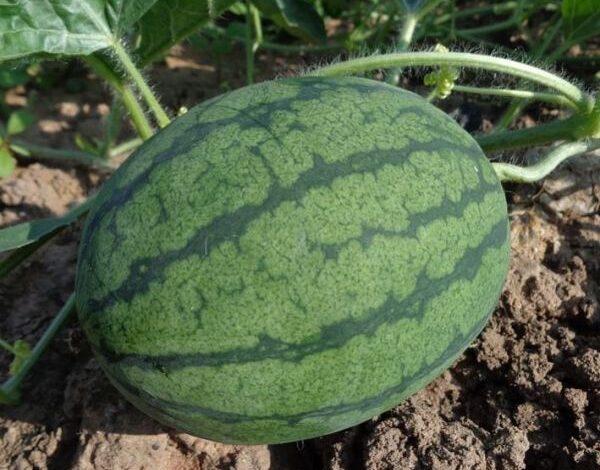
Hello dear gardeners! As promised, we continue with summaries of the pests and diseases that can affect each of the garden crops . We already have the common pests and diseases in tomatoes and also in peppers. Today is the turn of the watermelon, a very typical fruit of this summer time. If your watermelon plant starts to get sick, you can find out in this article what may be attacking it.
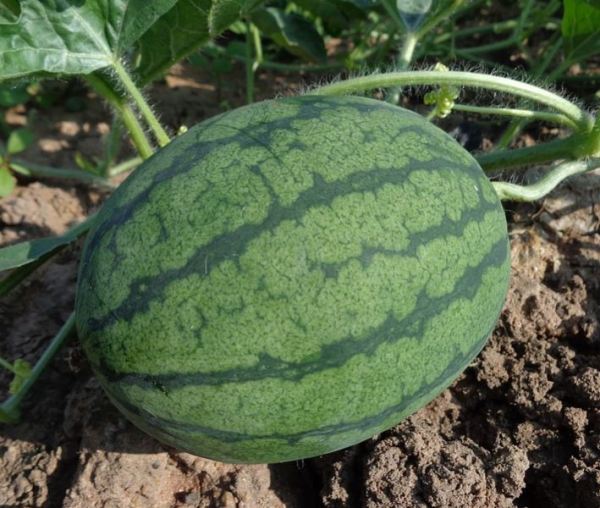
Caterpillars on watermelon
We find some holes of considerable size where, sometimes, we can see the caterpillar eating our fruit. You can also observe gnawing on leaves, flowers, fruits and tender shoots, usually with excrement and WITHOUT SLUGS (it gives us the clue that it is not a snail or slug).
The main species of caterpillars that can affect watermelon are : Helicoverpa spp., Spodoptera spp., Autographa gamma, Chrysodeixis chalcites, Diaphania nitidalis, Diaphania hyalinataetc, etc.
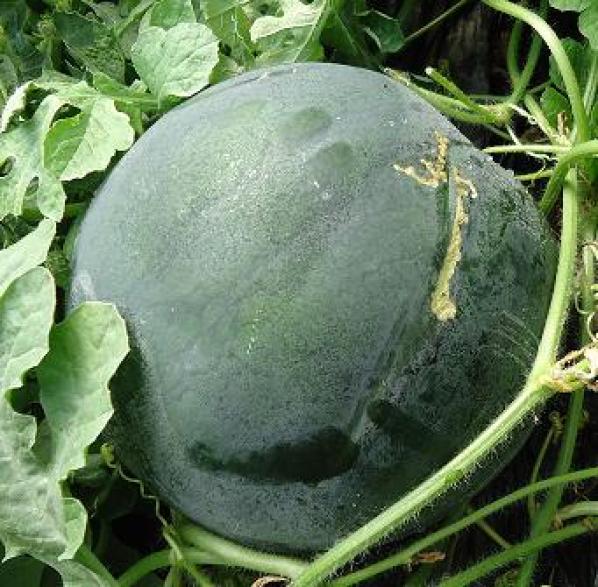
In the post about caterpillars on plants there are more details of the symptoms and possible ways to eliminate a lepidopteran infestation.
Watermelon aphids
Aphids produce a downward curl and wrinkle of leaves . In addition, you can see colonies of these small dark or greenish insects, especially on the tender shoots of the developing plant. Another clue is the presence of molasses (sugary and sticky substance) and ants around them defending them.
The main aphid species that affect watermelon are: Myzus persicae, Aphis gossypii.
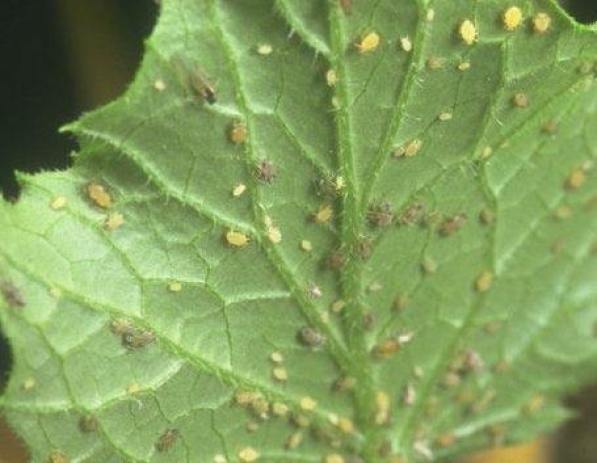
Whiteflies on watermelon leaves
We can see some white flies (which are not really flies) with a characteristic erratic flight when shaking the plant. In addition, like aphids, they release molasses. They are usually arranged on the underside of the leaves.
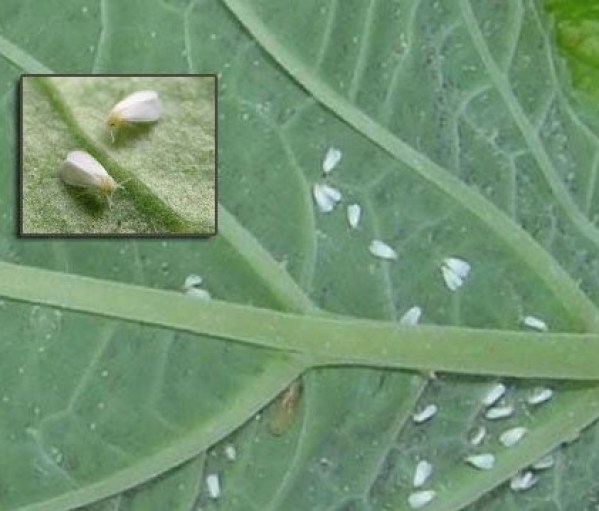
Whitefly species: Trialeurodes vaporarium, Bermisia tabaci.
Spider webs on watermelon leaves
The spider mite ( Tetranychus urticae) is a mite that leaves the leaves discolored with small stippling and silks. If it affects significantly, it can cause desiccation and defoliation of the plant.
White galleries on leaves: leaf miner fly
The miner fly (Liriomiza spp.) : Makes clear and sinuous galleries in the leaves.
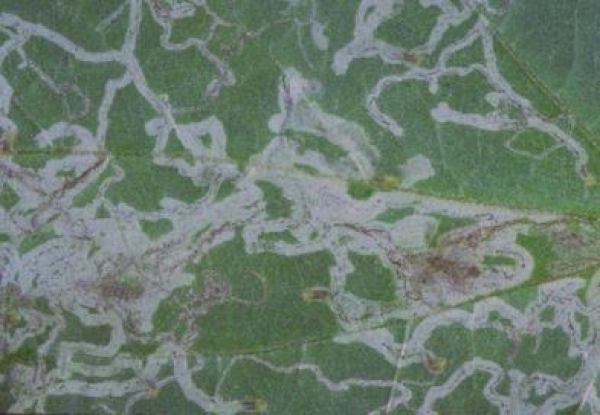
Thrips in watermelon
Flower thrips (Frankliniella occidentalis): Damaged plants have leaves with small, irregular silver spots, corresponding to lesions on the underside.
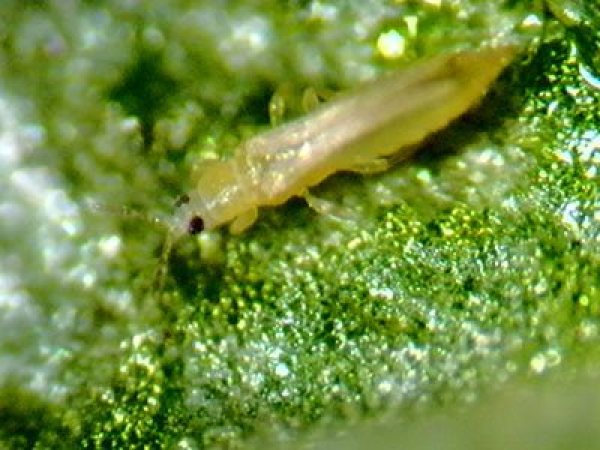
Fungi on watermelon plants
- Downy mildew (Pseudoperonospora cubensis): This fungus causes light green spots to appear on the upper part of the leaves that turn yellowish and round. On the underside, the spots correspond to a gray-violet felt due to the formation of the spores of the fungus. Later, the leaves become necrotic, taking on a parchment appearance and the petioles remain green, holding the leaves completely dry.
- Powdery mildew or ash ( Sphaerotheca fuliginea and Erysiphe cichoracearum ): They produce whitish, rounded and powdery spots on both sides of the leaf, as if they were snowflakes. The spots increase until they cover the leaves, which become dry, yellow and fall off.
- Gummy stalk canker ( Didymella bryoniae): In seedlings it mainly affects the cotyledons in which it produces rounded brownish spots, in which black and brown dots are observed distributed in the form of concentric rings. The most frequent symptoms are those of “gummy stalk canker” characterized by a beige lesion on the stem, covered with pycnidia and / or perithecae (fungal structures), and gummy exudations are frequently produced near the lesion. In the aerial part it causes the wilting and death of the plant.
-
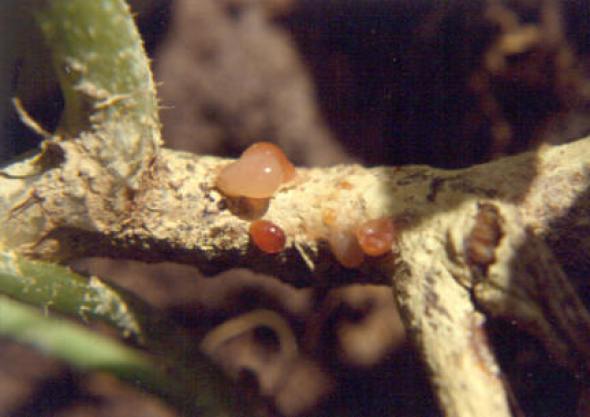
- Gray rot ( Botrytis cinerea ): The fruits show soft apical rotting covered with gray mold. In addition, necrosis can occur in flowers.
- Neck and root rot (Phytophtora spp. Pythium sp., Rhizoctonia sp., Fusarium sp.): Young plants wither, presenting strangulation and rot in the neck (the lowest area of the stem that adjoins the substrate) and / or estate.
- White neck rot (Sclerotinia sclerotiorum and Sclerotinia minor) : This fungus gives rise to soft and moist rot of the neck area showing a cottony, white appearance accompanied by dark structures similar to peppercorns. In addition, the plant presents generalized wilting.
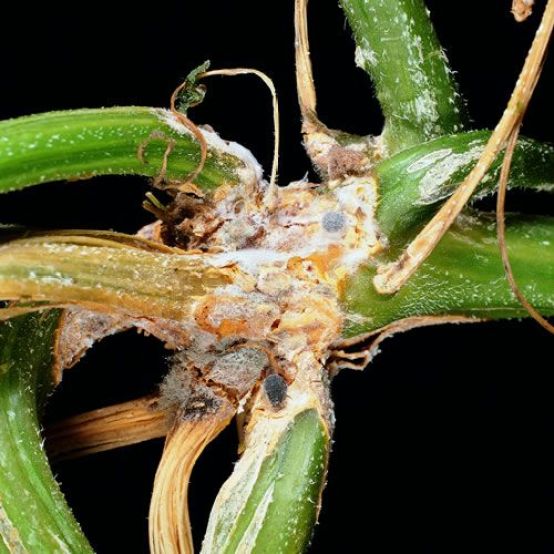
Cysts in the roots of watermelon: nematodes
Nematodes (Meloidogyne spp.): Plants infected by nematodes show weak growth, wilting, chlorosis, and roots with deformations and galls (nodules). Distribution in stands (plants forming more or less circular areas) or following irrigation lines.
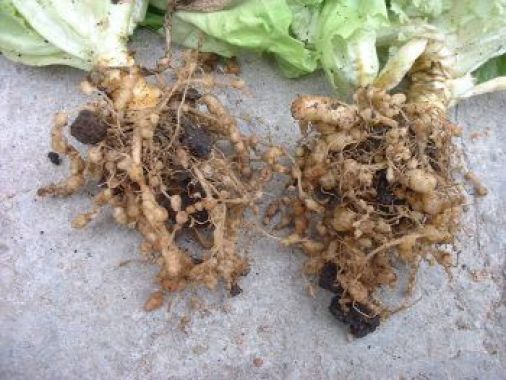
Viruses in watermelon plants
Virosis: Mosaics in leaves, dwarfism, chlorotic rings (yellow), curling and curling of leaves, deformations of fruits with wavy spots or rings.
Common pathophysiology in watermelon
The physiological disorders are diseases caused by abiotic factors , ie, there is no causative pathogen but it fosters a bad condition in the middle as deficiencies or excesses of nutrients, low or high temperatures, drought and mismanagement of irrigation and salinity , among others .
- Fruit sucking: The fruits grow malformed with a thin, undeveloped tip.
- Isolated or pressed fruits: A depressed white area appears on the side of the fruits exposed to the sun, leaving the tissue with a papery appearance and, if the fruit is still young, then a scar is formed.
- Fruit cracking : Appearance of longitudinal or concentric cracks around the area of the fruit peduncle that can take on the appearance of a cork.
- Fruit fogging: The fruits stop growing shortly after the start of development and finally dry out.

![Photo of Pests and Diseases of Tulips: [Detection, Causes and Solutions]](https://www.complete-gardening.com/wp-content/uploads/2022/08/pests-and-diseases-of-tulips-detection-causes-and-solutions-390x220.jpg)
![Photo of Salvia Microphylla: [Characteristics, Cultivation, Care and Disadvantages]](https://www.complete-gardening.com/wp-content/uploads/2022/08/salvia-microphylla-characteristics-cultivation-care-and-disadvantages-390x220.jpg)
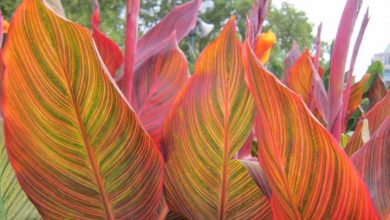
![Photo of The Cultivation and Planting of Soybeans: [Complete Step-by-Step Guide]](https://www.complete-gardening.com/wp-content/uploads/2022/08/the-cultivation-and-planting-of-soybeans-complete-step-by-step-guide-390x220.jpg)